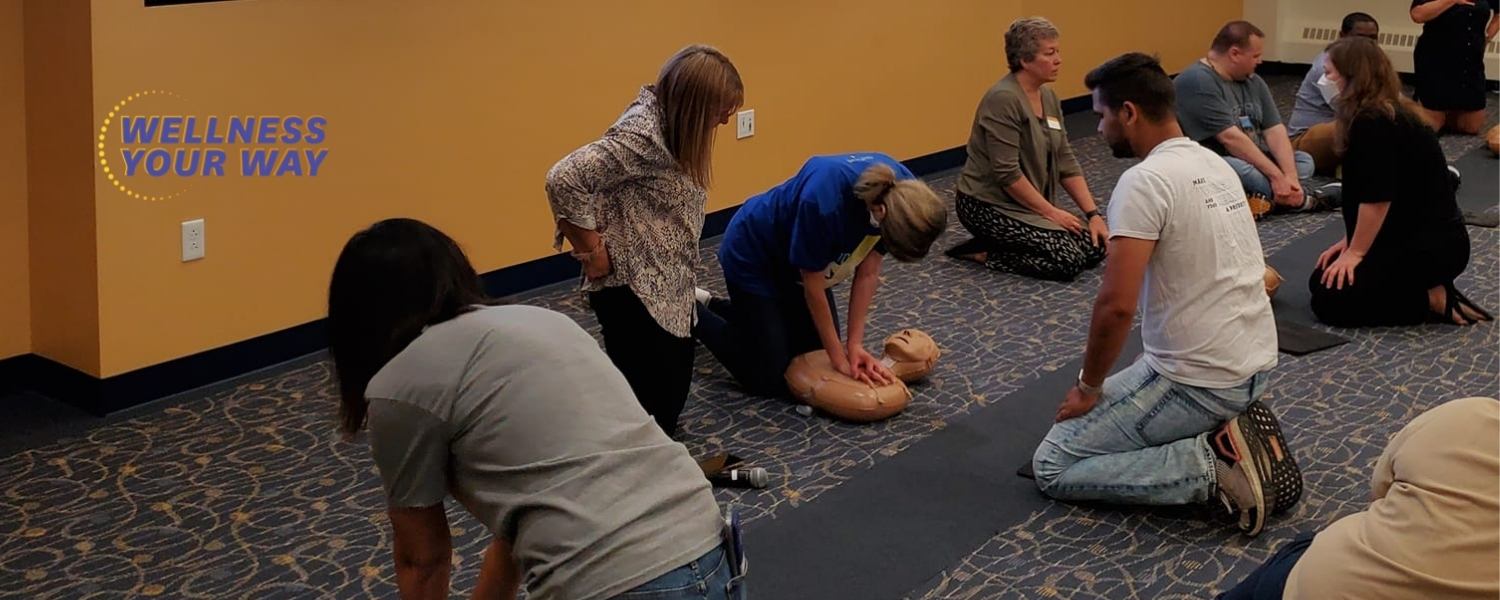Hands-Only CPR
Hands-Only CPR Training
A tool for changing the bystander response and survival rate for cardiac arrest victims
Kent State Employee Wellness and the American Heart Association hosted its first train-the-trainer session for Hands Only CPR. This team is now ready to facilitate training in your department, campus, etc. Initiate your request for training here.
The American Heart Association has released the Heart and Stroke Statistics - 2022 Update. According to the report, cardiac arrest remains a public health crisis. There are more than 356,000 out-of-hospital cardiac arrests (OHCA) annually in the U.S., nearly 90% of them fatal.
Kent State Employee Wellness wants to help reverse that 90% fatality rate and we can by providing the tools to perform hands-only CPR, which refers to the ability to properly provide continuous chest compressions without rescue breaths. According to the AHA, hands-only CPR is “as effective in the first few minutes as conventional CPR for cardiac arrest at home, at work or in public.” The purpose of hands-only CPR is to get blood pumping through the victim's body until paramedics arrive on the scene and perform more advanced life support.
Why is hands-only CPR important?
- Some rescuers aren’t willing or able to deliver rescue breaths, but they can still jump in and help by providing hands-only CPR, which will still greatly improve the victim’s chance of survival.
- You can double or triple a person’s chances of survival from sudden cardiac arrest by immediately performing CPR.
- Hands-only CPR requires less energy than conventional CPR, since you are not delivering rescue breaths. That means you can give the victim life-saving compressions for longer.
- Hands-Only CPR keeps blood flowing to a person’s brain after their heart stops beating. The AHA emphasizes chest compressions over rescue breaths because minimizing interruptions to compressions is a key part of delivering high-quality CPR, and the circulation of oxygen to vital organs is more important than delivering more oxygen to the victim.
- Early CPR is a key link in the chain of survival for victims of OCHA.
Another benefit of hands-only CPR training is the fact that it is faster and easier to learn than traditional CPR and is a pandemic-safe way for bystanders to help save a life.

